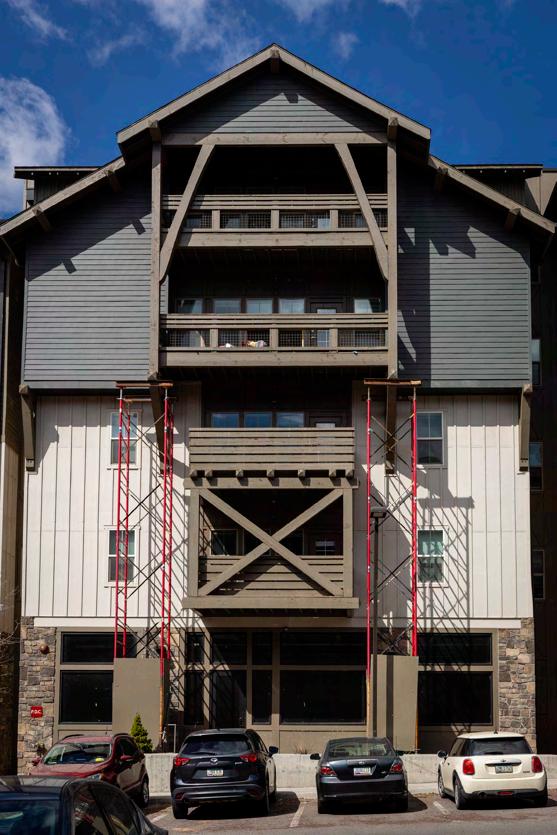
2 minute read
lifespan of trees
White pine blister rust is a fungus native to Asia. Researchers say the disease was introduced to North America unintentionally around the turn of the 20th century through the import of infected white pine seedlings. The fungus attacks five-needle pines and kills more than 95% of the trees it infects by cutting off pathways for water and nutrients where new growth occurs.
Amanda De La Torre, an assistant professor of forest genetics, researches the genome of sugar pines to find out why this fungus has spread over the years.

“What my lab is trying to do is to know whether this species has some sort of resistance to that fungus,” De La Torre said. “And they try to identify which natural populations have resistance to the disease so they can use them for forest restoration purposes.”
The U.S. Forest Service reported about 3% to 5% of white pines are resistant to the effects of white pine blister rust. However, the tree will not necessarily die right away. De La Torre said she found certain trees with natural resistance genes known as CR1 in their DNA can live with the fungus.
“There’s other genes of smaller effect that also provide some resistance in the long term,” De La Torre said. “We have identified a bunch of them that we’re trying to confirm whether they are really what we’re looking for.”
One of the main objectives of the research is to understand how climate is affecting the trees’ resistance. With warming climates, De La Torre said white pine blister rust fungus is spreading at a faster rate. In certain areas, this fungus can spread because of the warmer temperature, which not only affects this specific fungal species, but also the spread of other diseases and pests.
Researchers have found rotting trees killed in the U.S. by forest insects such as bark beetles and emerald ash borers releases carbon dioxide into the atmosphere at the same rate as wildfires.
“So, by having trees grow bigger and healthier, that can actually positively address the carbon emission issues,” Han said. “Forestry is a good player in the idea of mitigating climate change issues. I won’t say that it will solve the climate change problem, but it will contribute to slowing it down.”

As healthy trees grow, they take in carbon from the air and store it in their wood, plant matter and soil. Trees play an important role in the global carbon cycle by soaking up carbon dioxide that would otherwise live in the atmosphere.
An MIT report found an older tree has the ability to absorb around 50 pounds of carbon dioxide in a year. However, the carbon dioxide that trees absorb is released back into the atmosphere if they are burned in a forest fire.
California’s record-breaking 2020 fire season experienced more than four million acres burned. According to a study published in Environmental Pollution, the fires released almost twice the tonnage of greenhouse gasses as the total amount of carbon dioxide reductions California made since 2003.
Researchers estimated the fires released 127 million metric tons of carbon dioxide into the air, reducing the 65 million metric tons of carbon reductions California made in the past.
More information about forestry’s projects can be found on the NAU Research website. De La Torre’s project can be followed through her labs’ Twitter and Instagram accounts, and ERI projects, including Han’s, can be found on the ERI website















